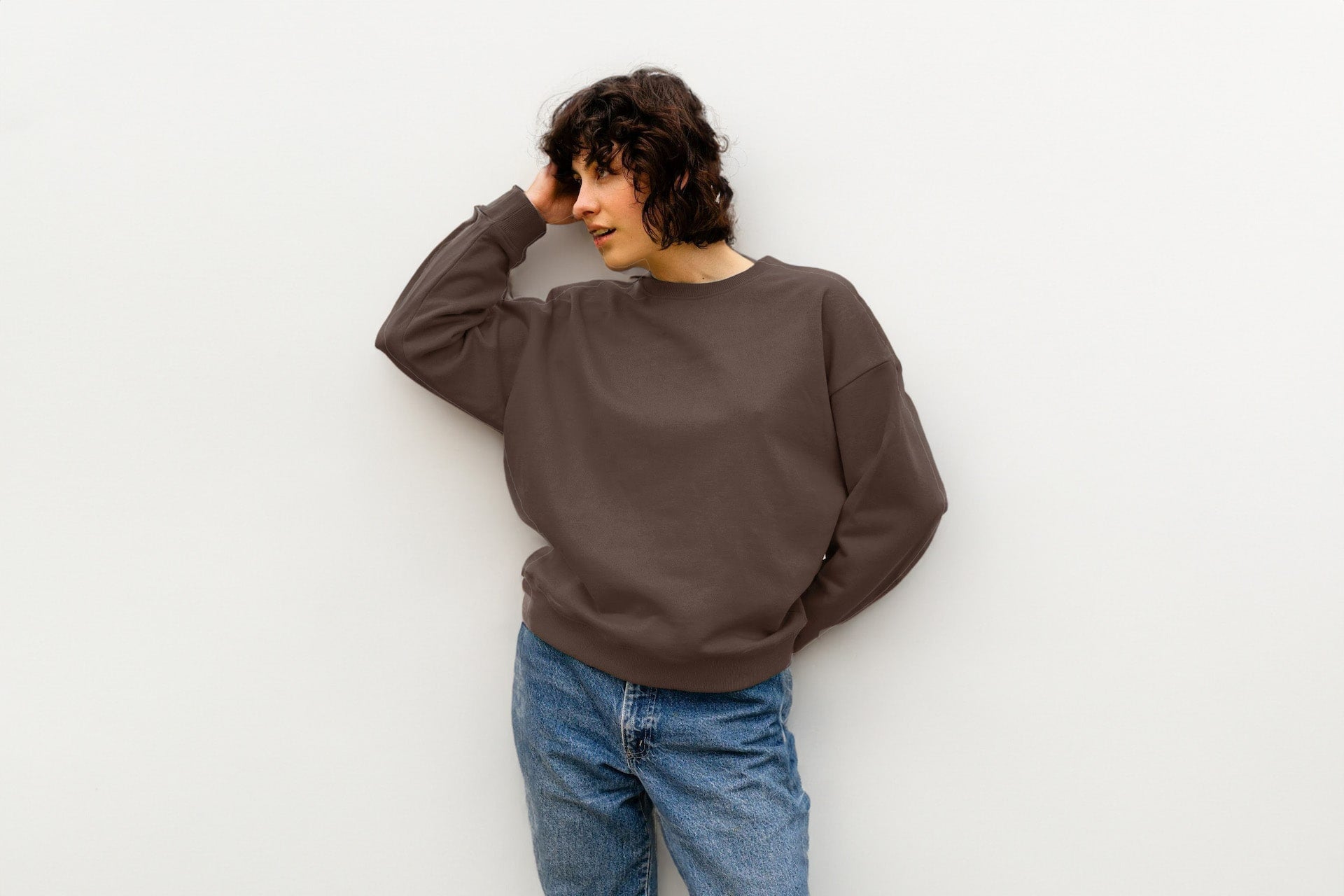Technically, it’s the second most widely used fibre in the world. Yes folks, we’re talking about cotton. But since we’re a sustainable brand and all, we’d like to focus on its more earth-loving counterpart: organic cotton. Plant-based and produced without chemical pesticides or fertilisers, and minimal water, it was one of the earliest fabrics known to man. Back when times were simpler.
Now it’s manmade synthetics that dominate the market. Ironic, isn’t it? But change is on the horizon. At least, we’re all hoping and advocating for it. So how, might you ask, did organic cotton get its start? Then what happened to it? And where’s it headed from here?
We go over the last millenia - and a bit more - to learn about POMP’s beloved fabric of choice.
Here are some links to skip to an era of your choice:
Pre-19th century
Civilisation has been around for a long time. And at some point, we developed enough common sense to realize we needed to cover ourselves up with more than the minimal drapings that most of us associate with the Palaeolithic period.
The first traces of cotton cultivation date back to 5000 BC in what we know as present-day Pakistan. Fabric fragments were found in Mohenjo Daro, the largest settlement of the ancient Indus Valley Civilisation. Somewhere along the way, Arab traders had a hand in spreading cotton from the East to Europe, in particular Italy and Spain. Fast-forward to the 16th century, cotton was being grown throughout America and Asia.
The next big moment came in the 18th century when Eli Whitney invented the cotton gin. His machine revolutionised the cotton industry, and it also made this particular shrub America’s most popular cash crop. But this industrial surge came at a cost. Vast cotton plantations needed extensive land clearing, leading to deforestation and soil depletion.
Early 1900s
Early advocates for better practices emerged, driven by concerns about the environmental consequences of conventional cotton cultivation. Among them, Sir Albert Howard and J.I. Rodale.
Sir Albert Howard, often referred to as the "father of organic farming," conducted extensive research in India during the early 1900s. His work emphasized the importance of soil health in maintaining a balance between the land and all living creatures, humans included. J.I. Rodale was another supporter of agriculture sans the chemicals.
He founded The Rodale Institute, a nonprofit dedicated to today’s regenerative organic revolution.All that said, organic cotton a hundred years ago wasn’t so quickly accepted. Conventional cotton farming was far more economical, and it had the support of the textile industry. A shift towards lower yields in exchange for consideration of Mother Earth required a change in mindset.
The 60s & 70s
As the counterculture attitude of the 60s and 70s gained momentum, so did peoples’ environmental consciousness. This newfound awareness extended to many lifestyle choices, like food as well as fashion. Consumers slowly sought alternatives to conventional cotton, notorious for its heavy reliance on pesticides and chemical fertilisers.
Small independent brands sprang up, offering clothing made from natural fabrics. But organic cotton wasn’t alone. There was linen and hemp, too. 1973 saw the birth of the now-iconic Patagonia. Although Yvon Chouinard initially founded the company to sell climbing equipment, the business was really a representation of his deeper connection with the great outdoors.
Patagonia would go on to become a trailblazer in sustainability, championing organic cotton and setting the bar for transparency and ethical sourcing.Organic cotton was nearing its renaissance. Humble, yet visionary, brands recognised the need for a more eco-friendly approach to doing business.
The 80s & 90s
The Organic Trade Association (OTA) was established in the US in 1985, marking a major milestone for sustainable farming practices. The organisation became a crucial advocate for kinder agricultural methods and provided a platform for organic cotton to flourish.
During the 1990s, the concept of organic clothing slowly went mainstream. In 1994, Patagonia made the groundbreaking decision to convert its entire sportswear range to 100% organic cotton within an 18-month timeframe. This move by a prominent industry player helped spur a movement, demonstrating that large-scale adoption of eco-friendly practices was not only feasible but also commercially viable.
A few years earlier (when exactly is a mystery), Levi Strauss & Co. launched their “Naturals” pants, though their efforts were supposedly not so successful. But in 1997, Patagonia approached three big apparel makers - Levi’s, Nike, and Gap - to experiment with blending organic and conventional cotton fibres. Why?
To prove the financial argument for green business - especially to the unconvinced - and ultimately, to ignite organic cotton farming in the US. The project was conceptualised by the then-leader of the Sustainable Cotton Project.These decades set the stage for organic cotton to continue gaining traction among fashion buyers.
The 2000s until now
The 21st century's fashion landscape is marked by an increased understanding of the environmental and social impacts of clothing.
Organic cotton is one of the clear choices for any brand looking to be or go green. Its evolution has been shaped partly by the establishment of organic cotton certifications, which have far-reaching implications not just for the environment, but also for the economy and society. As early as 2006, they were introduced to regulate the industry, affirming that this natural fabric would be cultivated in compliance with set standards. For example, GOTS, is now one of the leading worldwide standards and was first established back in 2006.
Add to that the industry-wide push for sustainability. With shoppers demanding better-made options, organic cotton has cemented its role in supporting this paradigm shift. Although it accounts for only an estimated 1% of global textile production, its presence has steadily grown. According to the Textile Exchange Organic Cotton Market 2022 Report, organic cotton production saw a fifth consecutive year of increase. Key players include India, Turkey, and China.
While more alternative materials are popping up, organic cotton remains a reliable option for those who value style alongside sustainability.
In an industry that often wrestles with the environmental and social implications of its choices, we, at POMP, have always wanted to be a brand that’s better for people and planet. Our dedication is present in every piece, from our Sustainable Essentials to the #ShowYourStripes Collaboration. Each garment is made using certified organic cotton.

And if you’d like to see what other positive initiatives we have going on, head on over here.





